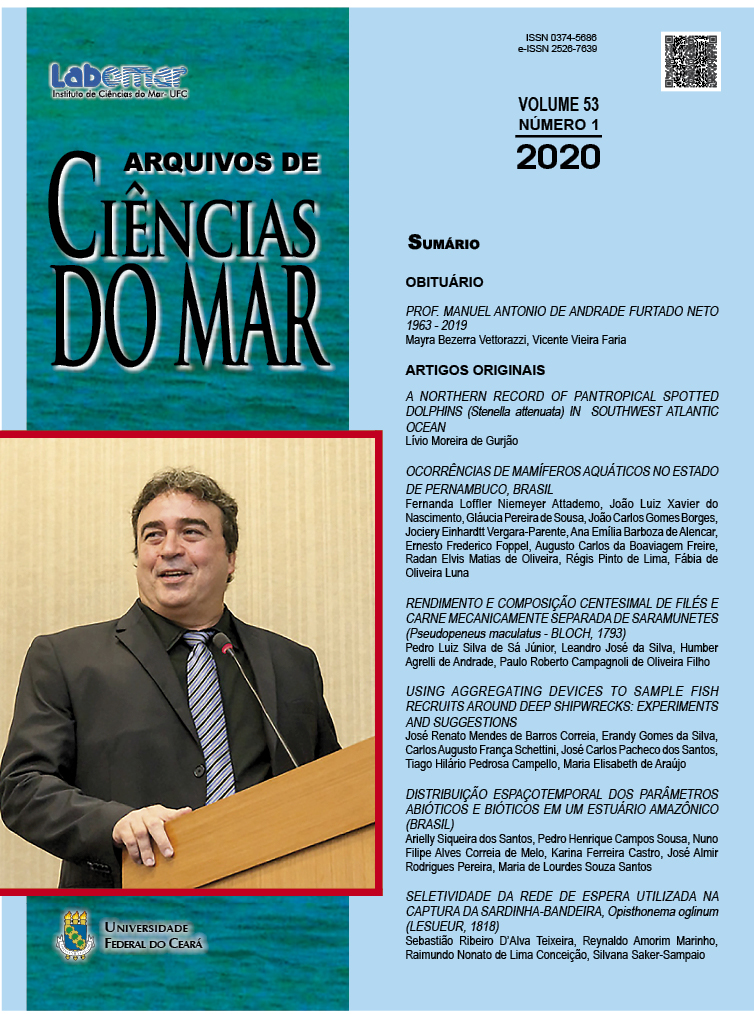USING AGGREGATING DEVICES TO SAMPLE FISH RECRUITS AROUND DEEP SHIPWRECKS: EXPERIMENTS AND SUGGESTIONS
DOI:
https://doi.org/10.32360/acmar.v53i1.42376Resumen
Fish aggregating devices (FAD) are an ancient fishery technique that benefits from the gregarious behavior of many species. They represent alternatives to usual census approach to study fish recruits. Based on this, we test two FAD models built for fish recruitment research, Standard monitoring unit for the recruitment of reef fishes (SMURF) and Artificial Reef Mooring (ARM) moored for the first time close to deep shipwrecks in
Brazil Northeastern coast. We compared fish recruits’ abundance sampled by both models at two depths, bottom and mid-water (6 meters from the bottom). SMURFs sampled seven times more fish recruits than ARM with no difference between depth. We discovered that SMURFs mooring tilted 24º in mean with local marine currents. A long-term study with SMURFs tested immersion time influence in recruit’s sampling, and explored recruit’s abundance and standard length at two depth from the bottom. Increasing immersion time
from 14-28 days did not influence recruit’s abundance. Bottom and Mid-water SMURFs sampled equal recruit’s number and fish sizes were significantly larger at the bottom. FADs, specially SMURFs, showed good tool to sample fish recruits in deeper shipwrecks,however standardization of FAD deployment is indicated to maximize work time and security in unstable sea conditions.
Descargas
Descargas
Publicado
Cómo citar
Número
Sección
Licencia
1. Proposta de Política para Periódicos de Acesso Livre
Autores que publicam nesta revista concordam com os seguintes termos:
- Autores mantém os direitos autorais e concedem à revista o direito de primeira publicação, com o trabalho simultaneamente licenciado sob a Licença Creative Commons Attribution que permite o compartilhamento do trabalho com reconhecimento da autoria e publicação inicial nesta revista.
- Autores têm autorização para assumir contratos adicionais separadamente, para distribuição não-exclusiva da versão do trabalho publicada nesta revista (ex.: publicar em repositório institucional ou como capítulo de livro), com reconhecimento de autoria e publicação inicial nesta revista.
- Autores têm permissão e são estimulados a publicar e distribuir seu trabalho online (ex.: em repositórios institucionais ou na sua página pessoal) a qualquer ponto antes ou durante o processo editorial, já que isso pode gerar alterações produtivas, bem como aumentar o impacto e a citação do trabalho publicado (Veja O Efeito do Acesso Livre).

